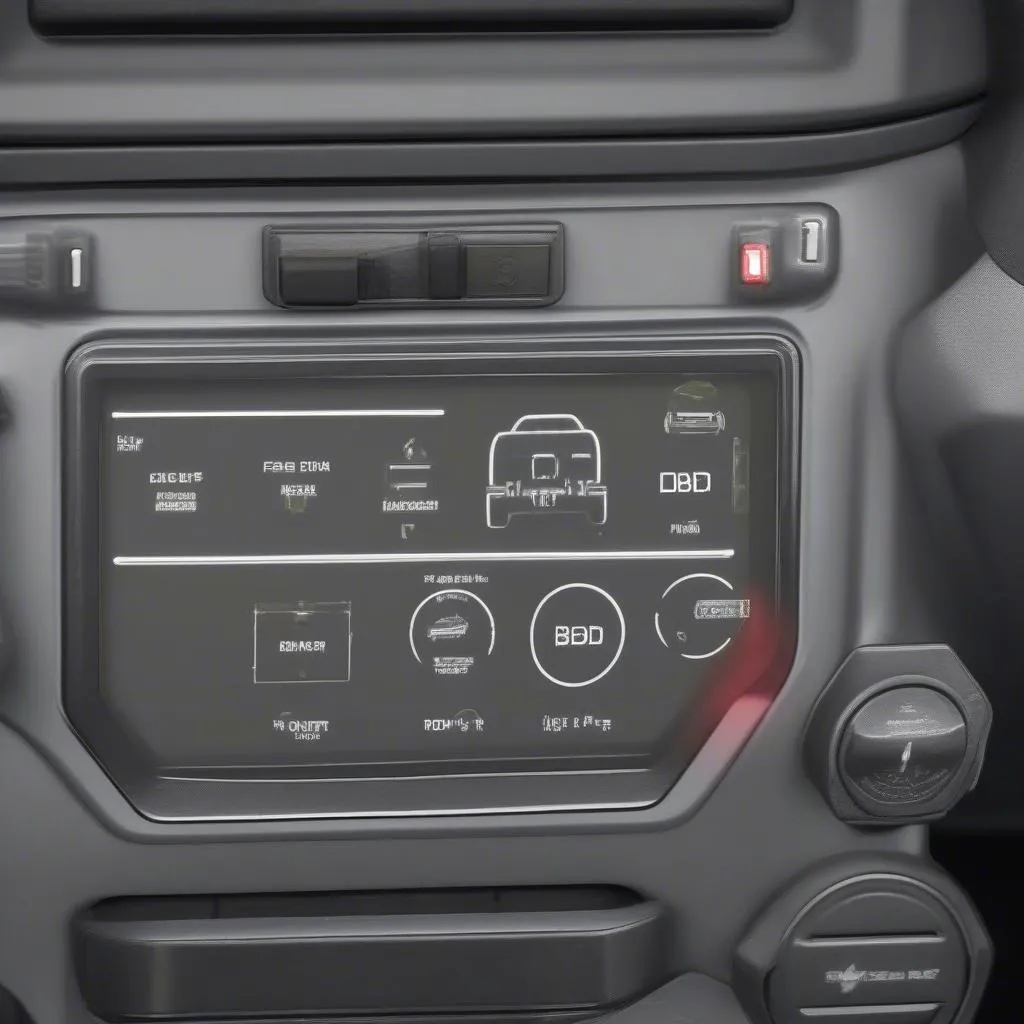Imagine this: You’re on a weekend off-road adventure in your Jeep Wrangler, enjoying the thrill of the trail. Suddenly, your engine starts acting up, and you suspect a problem with the electrical system. You want to diagnose the issue using your OBD2 scanner, but it’s not connecting! What do you do? The answer might be as simple as checking the OBD fuse.
Why is Understanding the Jeep Wrangler Obd Fuse Important?
The OBD (On-Board Diagnostics) system is essential for modern vehicles. It allows mechanics and even DIY enthusiasts like yourself to diagnose and repair problems with your Jeep Wrangler. The OBD fuse is a safety device that protects the OBD port and related circuitry from overloads and short circuits. If this fuse blows, your OBD scanner won’t be able to communicate with your vehicle’s computer, making it difficult to troubleshoot any issues.
Where is the OBD Fuse Located in a Jeep Wrangler?
Finding the OBD fuse in your Jeep Wrangler can vary slightly depending on the year and model. Generally, the fuse box is located in the engine compartment on the driver’s side.
Here are some steps to locate the OBD fuse:
- Open the hood of your Jeep Wrangler.
- Locate the fuse box. It’s often a black plastic box near the battery.
- Find the fuse diagram on the inside of the fuse box cover.
- Identify the fuse labeled “OBD” or “Diagnostic”. The fuse diagram should indicate the amperage rating for the fuse.
Here are some additional tips:
- Refer to your Jeep Wrangler’s owner’s manual: Your owner’s manual will provide precise instructions on how to locate the fuse box and identify the OBD fuse.
- Search online: Many online resources offer diagrams and instructions for specific Jeep Wrangler models.
Replacing the OBD Fuse in Your Jeep Wrangler
Once you’ve located the OBD fuse, replacing it is a straightforward process.
- Remove the old fuse: Using a pair of fuse pullers or pliers, gently pull the old fuse out of its slot.
- Inspect the fuse: The old fuse should have a visible break in the wire filament if it has blown. If it looks intact, try testing it with a multimeter.
- Insert the new fuse: Insert a new fuse with the same amperage rating as the old one.
Common Issues with the OBD Fuse
Sometimes, the problem is not just a blown fuse. You might encounter other issues that prevent your OBD scanner from connecting.
Here are some common issues and potential solutions:
- Faulty OBD port: If the OBD port itself is damaged or corroded, it can prevent communication. Clean the port with a contact cleaner and try again.
- Wiring problems: Check the wiring leading to the OBD port for any loose connections, breaks, or corrosion.
- OBD scanner issues: Ensure your OBD scanner is compatible with your Jeep Wrangler’s model year and is functioning properly.
Frequently Asked Questions (FAQs)
Q: How do I know if the OBD fuse is blown?
A: You can visually inspect the fuse for a broken filament. You can also use a multimeter to check if the fuse has continuity.
Q: What size fuse should I use for the OBD port?
A: The amperage rating for the OBD fuse is specified in your owner’s manual or on the fuse diagram. Always use a fuse with the correct amperage rating.
Q: Can a blown OBD fuse cause other problems with my Jeep Wrangler?
A: While a blown OBD fuse might not directly affect your engine performance, it can prevent you from diagnosing and resolving any underlying electrical issues.
Q: Where can I buy a replacement OBD fuse?
A: Replacement fuses are readily available at most auto parts stores, online retailers, and even some convenience stores.
Need More Help?
If you are still experiencing problems with your Jeep Wrangler’s OBD system, don’t hesitate to reach out for expert assistance. Our team of certified technicians is available 24/7 to help you diagnose and repair any issues you may have. You can contact us directly at [phone number] or via Whatsapp: +84767531508 for immediate support.
 jeep-wrangler-obd-fuse
jeep-wrangler-obd-fuse
Other Relevant Articles:
- Jeep OBD Port Location
- 2001 Jeep Wrangler OBD Scanner Not Working
- 1993 Wrangler 2.5 OBD Port Location
We hope this article has been helpful. Please share your thoughts or any other questions you may have in the comments section below!